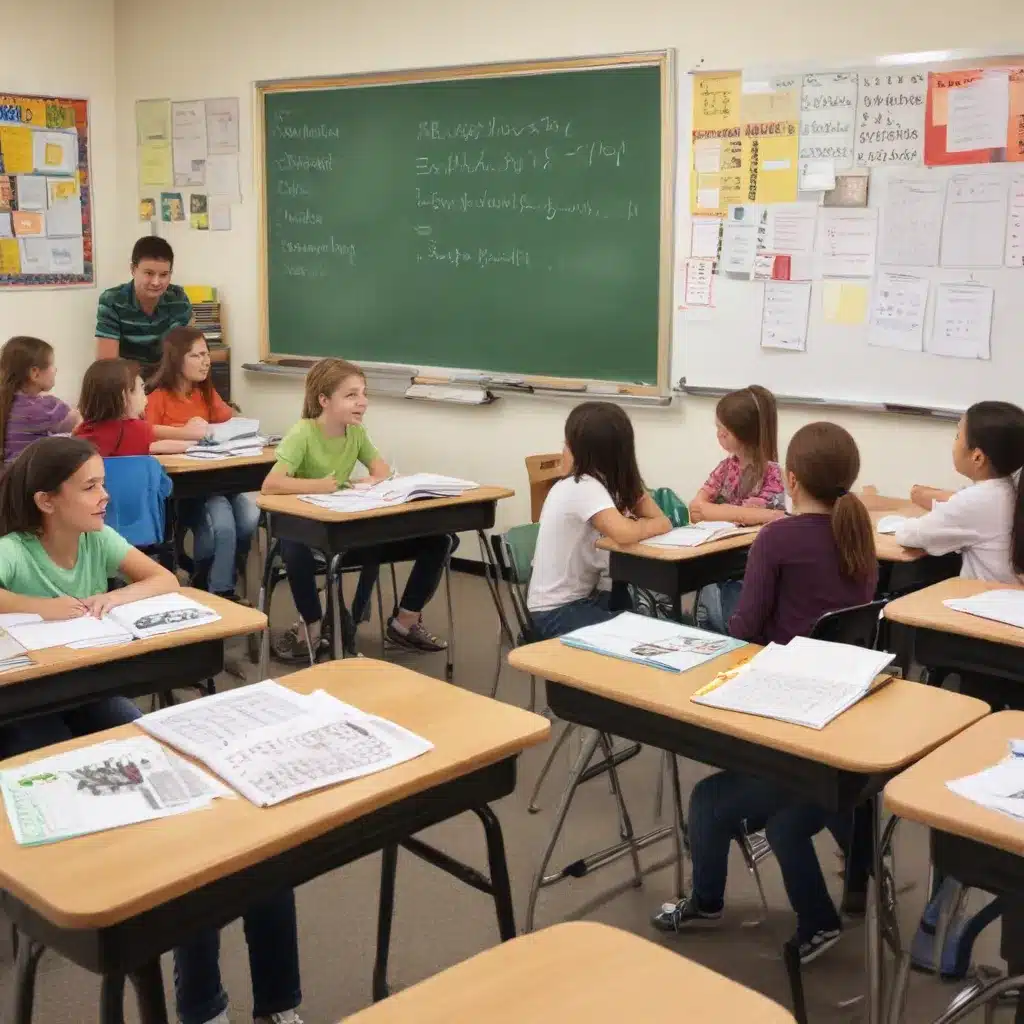
Uncovering the Power of Feedback
Feedback is a powerful tool in the classroom, with the potential to transform student learning and unlock new levels of growth. As an experienced educational writer, I’m excited to explore the big idea behind feedback, error correction, and engaging classroom activities that can help students thrive.
At the heart of effective feedback lies the understanding that mistakes are an essential part of the learning process. Rather than viewing errors as something to be avoided, we can embrace them as opportunities for deeper understanding and skill development. This mindset shift empowers both teachers and students to approach feedback with a spirit of collaboration and continuous improvement.
The Feedback Cycle
Feedback is not a one-way street; it’s an ongoing cycle of communication and collaboration between teachers and students. Effective feedback involves a thoughtful exchange, where the teacher provides clear, actionable guidance, and the student actively engages with the information to refine their work.
When implemented well, this feedback cycle can have a profound impact on student learning. Research has shown that effective feedback can lead to significant improvements in academic performance, increased motivation, and a deeper understanding of the subject matter.
Strategies for Meaningful Feedback
Crafting meaningful feedback requires a thoughtful approach. It’s not enough to simply point out mistakes; the feedback must be specific, timely, and focused on helping students understand where they can improve and how to do so.
1. Provide Timely and Targeted Feedback
Feedback is most effective when it’s delivered promptly, while the learning is still fresh in the student’s mind. Waiting too long to provide feedback can diminish its impact and make it harder for students to connect the feedback to their work.
Furthermore, feedback should be targeted and specific, addressing the particular strengths, weaknesses, and areas for improvement in the student’s work. Avoid generic or vague comments, and instead, provide clear and actionable guidance that the student can use to enhance their learning.
2. Focus on the Learning Objectives
Effective feedback aligns with the learning objectives of the assignment or lesson. By keeping the focus on the key skills and knowledge the student is expected to demonstrate, the feedback becomes more meaningful and relevant.
When providing feedback, consider the following questions:
– What were the learning goals for this task or activity?
– How well did the student’s work align with those goals?
– What specific areas can the student improve to better meet the learning objectives?
3. Foster a Growth Mindset
Cultivating a growth mindset is essential for making the most of feedback. When students believe that their abilities can be developed through effort and perseverance, they are more likely to embrace feedback and use it to their advantage.
Encourage students to see mistakes as learning opportunities, not failures. Celebrate their progress and effort, and help them understand that feedback is a valuable tool for improving their skills, not a judgment on their worth.
4. Encourage Peer Feedback
Incorporating peer feedback into the learning process can be a powerful way to engage students and foster a collaborative learning environment. When students provide feedback to their classmates, they not only develop their own critical thinking skills but also gain a deeper understanding of the subject matter.
Provide guidelines and structure for peer feedback activities, ensuring that the feedback is constructive and focuses on specific areas for improvement. This can help build a culture of mutual support and continuous learning in the classroom.
Classroom Activities for Feedback and Error Correction
Integrating engaging classroom activities that promote feedback and error correction can greatly enhance the learning experience for students. Here are a few ideas to consider:
1. Peer Review Sessions
Organize structured peer review sessions, where students exchange their work and provide feedback to one another. Encourage them to focus on the strengths of the work, as well as areas for improvement, and to offer specific, actionable suggestions.
2. Error Analysis Exercises
Provide students with examples of work that contain common mistakes or misunderstandings. Challenge them to identify the errors, analyze what went wrong, and propose solutions or alternative approaches.
3. Feedback-Driven Revisions
Design assignments that allow for multiple rounds of feedback and revision. After receiving feedback from the teacher or their peers, students can make targeted improvements to their work, showcasing their learning and growth.
4. Feedback Journals
Encourage students to keep a feedback journal, where they record the feedback they receive, reflect on their progress, and set goals for improvement. This can help students develop a more proactive and self-directed approach to their learning.
5. Feedback-Focused Discussions
Dedicate classroom time for discussions about the role of feedback and its impact on learning. Encourage students to share their experiences, insights, and strategies for effectively using feedback to enhance their academic performance.
By incorporating these and other feedback-focused activities into your lessons, you can create a learning environment that celebrates mistakes, fosters a growth mindset, and empowers students to take an active role in their own development.
Fostering a Culture of Continuous Improvement
Ultimately, the power of feedback lies in its ability to drive ongoing growth and improvement. By embracing a culture of continuous learning, where mistakes are viewed as opportunities and feedback is seen as a collaborative process, we can help students develop the skills and mindset they need to thrive.
As an experienced educational writer, I encourage you to explore the resources available on the Stanley Park High School website for more insights and strategies on effective feedback and classroom activities. Together, let’s empower our students to reach new heights of academic and personal success.

